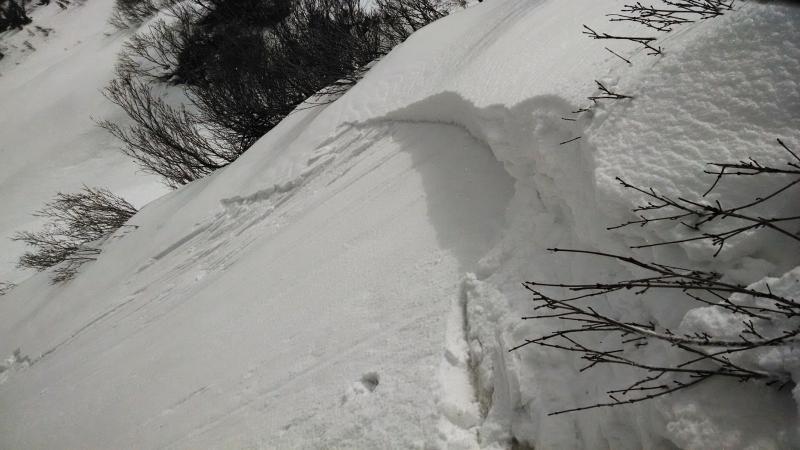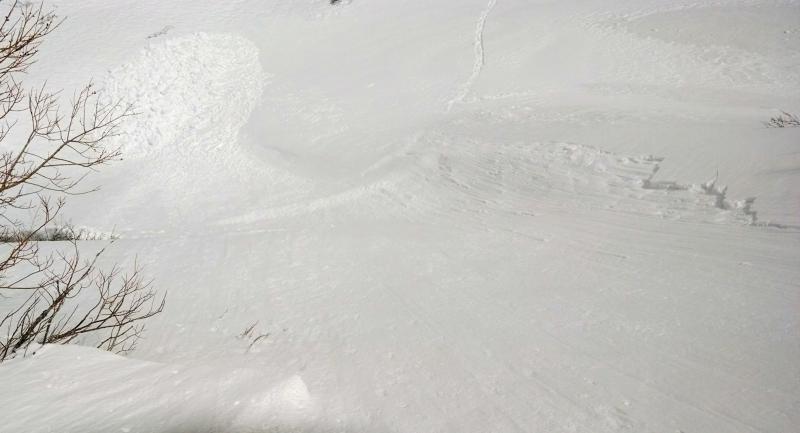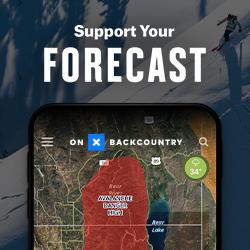Cold air finally arrived overnight, partially redeeming yesterday's rain disaster. The lowest snow (around 7000-7500 feet) was still saturated and not completely supportable everywhere, but starting at about 8000 the refreeze was more solid and snow surfaces were quite strong. I did not encounter any icy conditions, but some of the wind deposited snow (and there was a lot of that, scattered everywhere, not just along ridgelines) was quite slick. There was widespread debris from yesterday under all of the steep slide paths in Primrose Cirque. The debris was very chunky, indicating to me that the avalanches that left the debris were most likely the result of rain saturating and percolating through consolidated snow until it fractured as a slab. This wasn't relevant to today's hazard, or tomorrow's, but it was interesting to see the effect of the rain on widespread display. More relevant to today and tomorrow was the widespread presence of sensitive wind slabs. I triggered a large 38 degree, east facing test slope very easily. It propagated fast, far, and energetically in the very dense deposition, aided by poor bonding to the slick crust below. The entire slope fractured 20 feet across, and 100 feet downslope to the point where the slope angle eased. It was a perfect wind slab avalanche, propagating as far as the boundaries of the slope permitted it. If the slope had been larger, there is little doubt that the avalanche would have been larger as well. It was not merely a "pocket" that pulled out, but the entire slope. For me, this made the upper reaches of Primrose a no-go today. All of the upper slopes showed evidence of having run already today or yesterday, but no crowns were visible, indicating that they have reloaded from the constant strong winds. Walking up these steep windloaded slopes would have been quite dangerous today, and I believe that with cold temperatures today forecast for tonight will not promote healing for tomorrow. If more snow falls, it will of course be even more sensitive. The skiing up to 9000 feet was quite poor since the refrozen snow surfaces did not soften at all. Below 8000 feet warmer air created better skiing, but there isn't much snow below that. I suspect there could be better conditions higher (dense powder) but I was unable to get higher due to the hazard.





